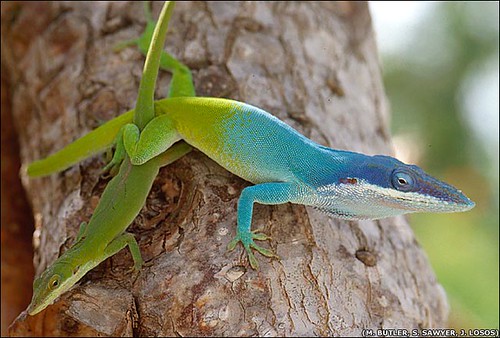Anolis lizards, Anolis allisoni, from Cuba. A study in the journal Nature is shedding new light on how size differences between males (right) and females (left) may affect the lizard's ability to adapt to new environments.
Image: BBC News.
As long as you send images to me (and I hope it will be for forever), I shall continue to share them with my readership. My purpose for posting these images is to remind all of us of the grandeur of the natural world and that there is a world out there that is populated by millions of unique species. We are a part of this world whether we like it or not: we have a choice to either preserve these species or to destroy them in search of short-term monetary gains. But if we decide to destroy these other life forms, the least we can do is to know what we are destroying by learning that they exist. If you have a high-resolution digitized nature image (I prefer JPG format) that you'd like to share with your fellow readers, feel free to email it to me, along with information about the image and how you'd like it to be credited.
.


What a beautiful animal. I don't think I've seen the half-and-half coloration pattern before. Very cool--thanks for posting it. I'll have to check out the Nature paper too.
i'll keep in touch with you.
i have a couple good anole photos to share